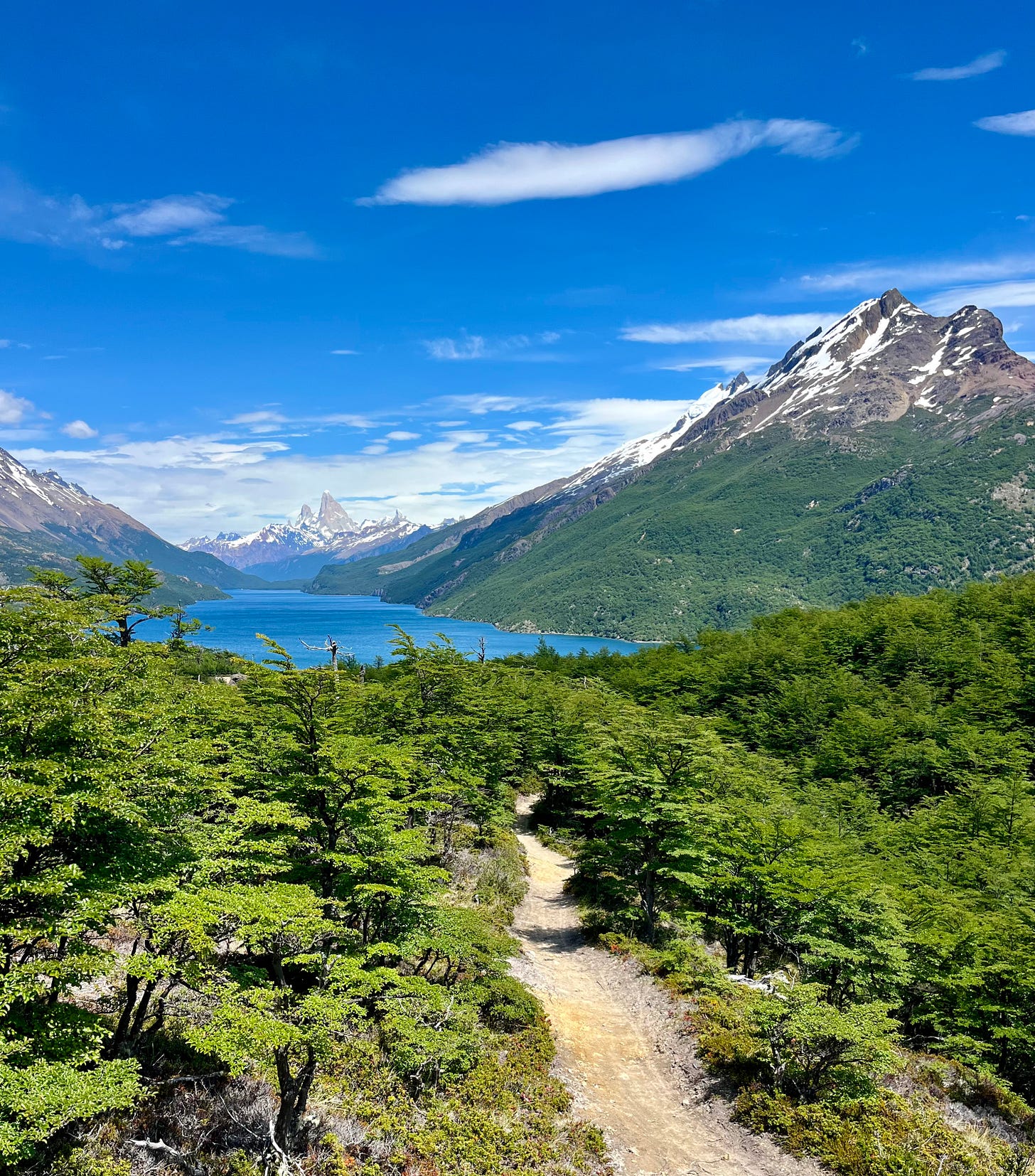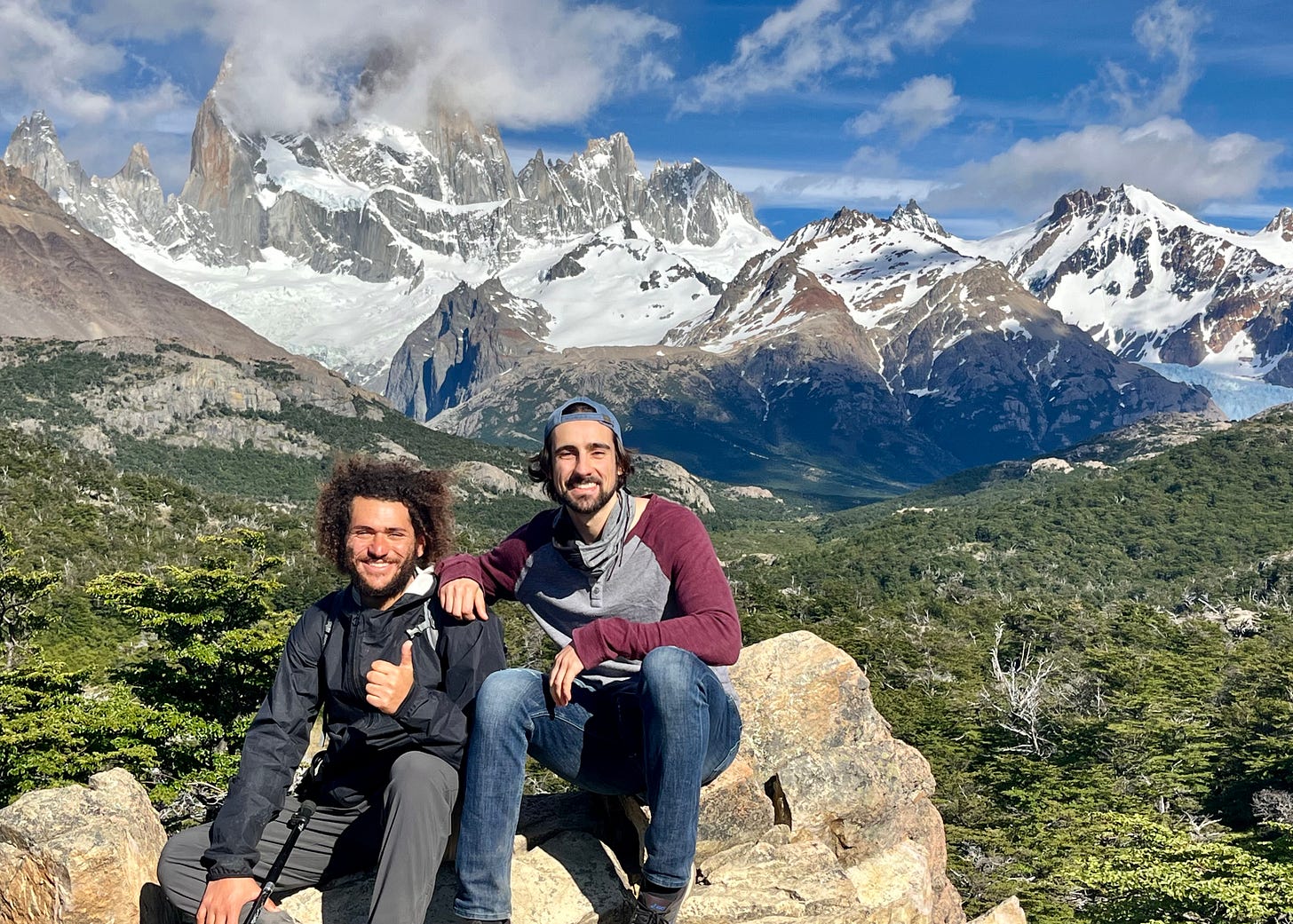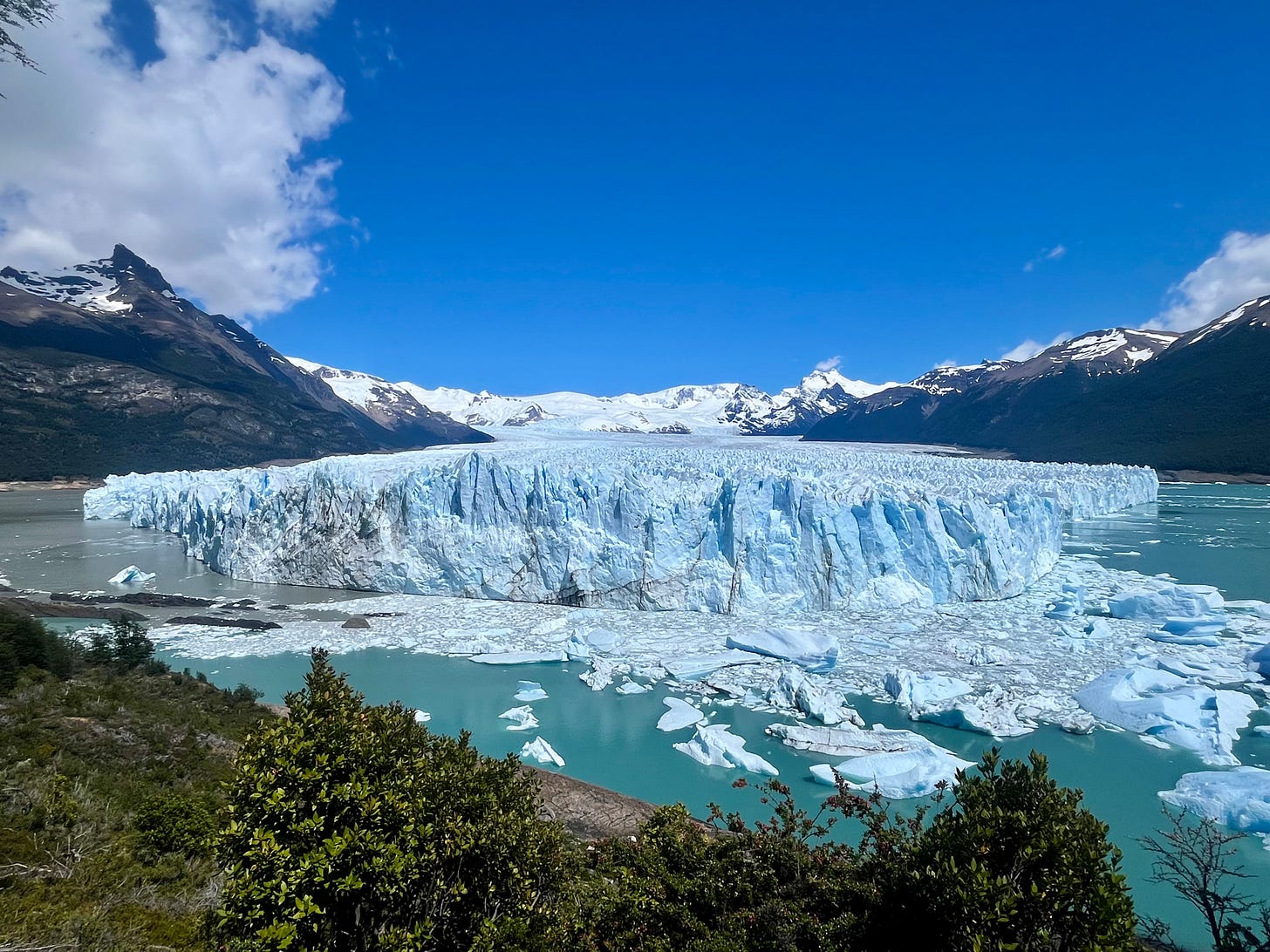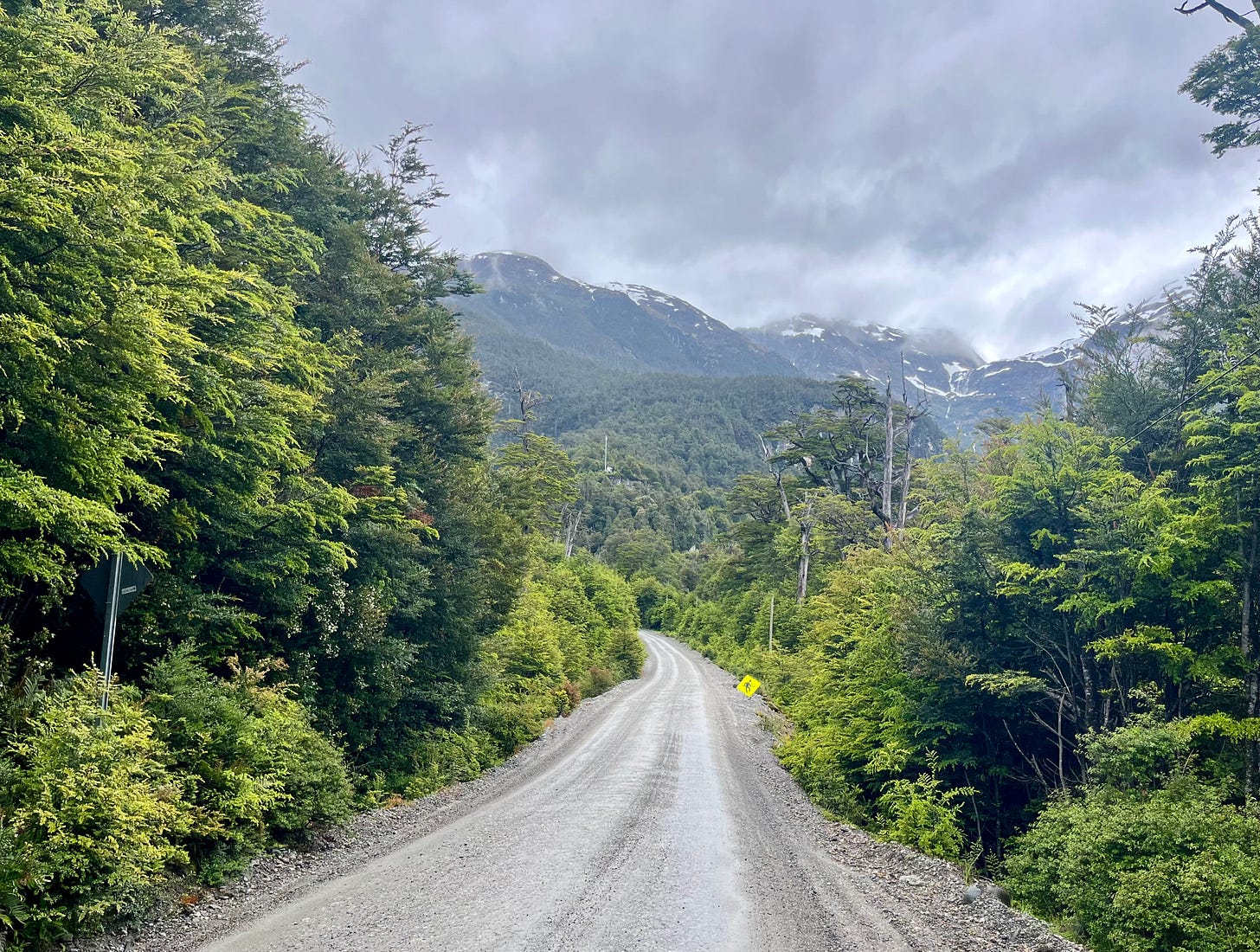El Fin del Mundo
06 | Ushuaia
“Are you sure you want to cycle here?” Patagonia asked with her howling volatile winds.
The truth was some days I was not. Some days, I was sick of it. I didn’t want to ride or deal with other people or camp. I still did, but I didn’t feel like doing it.
Although the final weeks of the trip were the most beautiful, they were also the most remote and windy. But southern Patagonia and the Tierra del Fuego region has been icing on the cake for this long cycling adventure.
We were mostly lucky in Patagonia weather wise, criss crossing from Chile to Argentina a couple of times, across gravel roads and ferries and having favorable winds on most days, and only a few days that were horribly cold, wet, and headwindy.
Riding the Carratera Austral, a newly mostly unpaved 1240km (770 miles) road that runs through the heart of southern rural Patagonia through multiple national parks was easily the most beautiful road of the journey. Most of the Carratera was traversed by other cyclists, backpackers, motorcyclists, or camper vans. And the final stretch of the road was the most unique border crossing so far from Villa O’Higgins in Chile to El Chalten in Argentina.
Phase 1 of the crossing was a 3:30 am alarm, breakfast at 4 am and a bus to ferry terminal at 4:30. After a 1.5 hours ferry, we exit the Chilean side immigration, the unique border crossing can only be made by bicycle, horse or walking, before hiking/biking and arriving to the Argentinian border and another ferry to El Chalten.
“We don’t expect to navigate here for 3-4 days because of the weather” said our early morning ferry captain, explaining to us why we’d been lucky to have a small post-dawn window with calmer winds.
“How was your hike a bike day?” I asked Andy, the rider who resembles the character from Pixar’s Up. “It would’ve been a lot better if the Argentinians got off their ass and cleaned up the trail on their side.” He replied.
The distinction between the unmaintained mostly unrideable Argentinian side of the island, and the well kept Chilean side was stark, and representative of their differences in style.
Our reward after the hike/bike was a pristine view of Mt. Fitzroy as we wait for our evening second ferry de jour and roll into El Chalten before the sunsets at 9ish. The more south we go the longer the days.
Most of the rides on the Carratera were quiet, and I found myself using my phone less frequently for music, enjoying the silence, and the sounds of crunchy gravel roads slipping below me, accompanied by the sound of rushing water everywhere. On one occasion, I heard a certain knocking sound. I slowed down, unsure if it was something with my bike. Sped up again, slowed down. The rhythmic knocking continued uninterruptedly. I stopped, and started walking slowly investigating the metronomic beats coming from the forest.
To my surprise, I see three handsome red-headed woodpeckers hanging on a branch, one upside down, and I stop and observe them for a while. I reflect on something I read about woodpeckers in Leonardo Da Vinci’s biography, on how he carried a notebook and curiously penned note to himself to ask fulano to describe the tongue of a woodpecker.*
It’s these small moments that are so special to me while traveling on a bicycle. To hear the sound of a gentle knock that would be so easily muted in a bus or a car, or even in a larger group of cyclists.
It’s these small moments that made me want to pinch myself to make sure I was really appreciating where I was and what I was doing? Hearing these woodpeckers, seeing baby rheas and guanaco on the side of the road, or condors soar overhead. I ride solo and much slower in the last few weeks to take long stops like this. It’s easy to get swept up by the rhythm of the group, or the exhaustion of long days in the saddle, fixing flats, staying hydrated, etc. but I try my best to keep the small flame of wonder lit.
*A woodpecker’s tongue can extend over three times the length of its bill and when retracted, it wraps around the skull and curves down to its nostril!
Getting into El Chalten, I was surprised to see an old friend and dorm-mate from my first year of university.
“Alex? What are you doing here?” I say startled to see him in the middle of the street. “Mark? What are YOU doing here?”
And after sharing dinner, we made fortuitous plans to go for one of the more famous hikes in El Chalten to Mt. Fitzroy, the inspiration behind the Patagonia clothing brand logo.
In addition to the hike in Fitzroy, we also had some extra time to explore the beautiful Torres del Paine National Park in Chile as well as the Perito Moreno glacier. I was stunned by the almost earthquake-like sound of ice pieces falling.
Why are the pieces falling? Why is the glacier so blue? I wonder, and learn that pieces of the Perito Moreno Glacier fall because the advancing ice breaks off at the edges, as it is one of the few glaciers in the world that is still growing. While its intense blue color comes from denser, compact ice scattering blue light while absorbing other colors.
Bumping into Alex made me reflect on how wonderful spontaneity can be while traveling. And in our tight schedules, covering 100+ km a day, roughly five days a week, for five and a half months, how sometimes it’s been difficult to create space for it.
Someone asked me if I would do something like this again, and although I feel immensely grateful for the chance to have done this, I probably wouldn’t.
It was a little too long, and the schedule a little too regimented to allow for more flexibility and spontaneity, and having to deal with a big group and the people dynamics was not always easy. I was often reminded by Jean Paul Sartre’s famous quote: “hell is other people.”
But I am proud of myself for sticking through this to the end, and pushing through. I’m not someone that had much routine in my life before the trip, and the struggle for me wasn’t only the cycling but sticking to the timetable and schedule, as well as the dynamics of cycling with a unique group of folks who have children or even grandchildren my age.
It’s the people over the places isn’t it? And perhaps I would do something like this again with a buddy or two, or alone, for something shorter, and can have more space to explore and for spontaneity. Although, a ride will always feel like it passes quicker when you are riding with good company. And I have greatly appreciated the unique cross generational friendships that formed.
I did often try and do my own thing, and take the daily route more as a suggestion rather than a command. On one occasion on the carratera, Stephan and I took a fun hot springs detour, skipping lunch and the opportunity to refill our water. Fortunately, not a problem with Patagonia’s fresh water supply.
Another of my most memorable detours was our first day in the Tierra del Fuego, the tail of the dragon region, and after getting off the ferry, racing on a gravel into a headwind to a remote king penguin sanctuary shortly before their closing time.
Notice in the photo below how the penguins incubate their eggs on the tops of their feet. Unlike other lesser progressive penguinos, the king penguins take turns incubating the egg, I learn.
Seeing the welcome to Ushuaia signs made my eyes well with tears. This journey was the most difficult thing I’ve done so far in my life. I was thinking of all the doubts and uncertainty that had come before this.
What started out as a dream over two years ago, turned into a reality.
Saving money, taking time off, Spanish lessons, workouts, planning, pedaling, camping… I was overwhelmed with emotions riding the final kilometers into the city. The two anthems ringing in my head were: I can and I am lucky.
I felt emotionally and physically exhausted by the end of this, but at the same time this deep sense of accomplishment. That I can do hard things. Things that are (very) slow and take time. That I can be patient and persistent. I can do things when I don’t feel like it, day after day after day after day. That I can dream up big loco dreams, and follow them and chart my own course.
And then, that I am lucky. That I am incredibly blessed. Deeply fortunate with close relationships that have been behind me from the start, and endowed with a healthy mind and body, and with the time and money to be able to make a trip like this happen. I am full of gratitude. Thank you to everyone that helped make this possible.
I wanted to visit South America, learn more about the continent, practice Spanish. I also wanted to push myself to become a better cyclist, and challenge myself. Although doing a supported bike tour like this has its disadvantages, it also has many advantages too. Everyday I knew my purpose, had a community, and there was a schedule in place: eat, cycle, camp, repeat. There was always a magenta line on my GPS that I could follow (or not) and the knowledge that I’m off course if I am. I will miss that sense of simplicity and purpose.
I know my course looks a little different than others, but I feel more confident that it’ll all work out. And of course, I will miss the people. I tried to learn something from everyone, whether practical cycling tips from other riders like how to patch a tube on the go, or how to prepare a maté from local Argentines, as well as more personal lessons on the importance of investing in health, relationships, and experiences over possessions (except perhaps bicycles).
I feel like this whole adventure has been about the bike but also not about the bike. And although Ushuaia is the end of this, it’s the start line of something else…
Thank you for being a part of my journey.
“A master in the art of living draws no sharp distinction between his work and his play; his labor and his leisure; his mind and his body; his education and his recreation. He hardly knows which is which. He simply pursues his vision of excellence through whatever he is doing, and leaves others to determine whether he is working or playing. To himself, he always appears to be doing both.” - Yvon Chouinard (founder of the Patagonia company)













